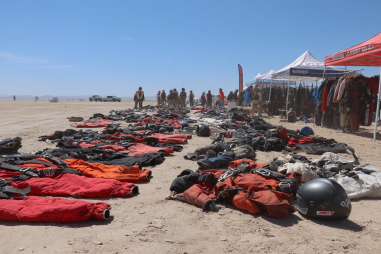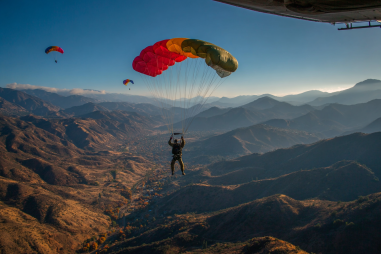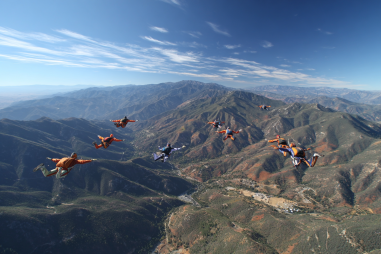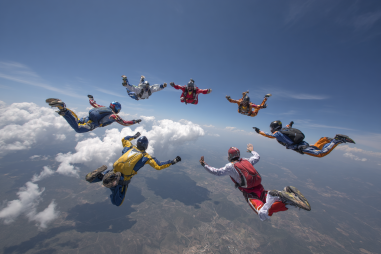Skydiving is an exhilarating sport that attracts thousands of adrenaline seekers worldwide. While the thrill of freefall and canopy flight is unmatched, the reality is that emergencies can arise at any moment. Understanding and adhering to skydiving safety protocols during emergencies is critical to minimizing risks and ensuring a safe landing. Whether you are a first-time jumper or an experienced skydiver, knowing how to stay calm and react effectively can save your life and the lives of others.
Introduction to Emergency Situations in Skydiving
Skydiving emergencies, though relatively rare, are inherent risks of the sport. These emergencies can stem from various sources such as equipment malfunctions, environmental factors, or human errors. Recognizing the nature of these emergencies and preparing mentally and physically to handle them is essential. Emergencies in skydiving can develop rapidly, so a prompt and practiced response is vital. The skydiving community places strong emphasis on safety protocols to enhance survival chances and reduce injury during unexpected situations.
Identifying Common Emergencies
Before learning how to respond, it’s important to identify what types of emergencies can occur during a skydive. Some of the most common emergency situations include:
- Main parachute malfunctions: Partial or total failure to deploy, line twists, or canopy collapse.
- Reserve parachute deployment issues: Failure or hesitation in deploying the reserve chute.
- Freefall collisions or entanglements: Contact with other jumpers or equipment that can cause instability.
- Unstable body position during freefall: Loss of control which can affect altitude awareness and deployment timing.
- Canopy control problems: Malfunctions like cross-canopy slippage, spins, or diving maneuvers that can cause hard or off-target landings.
- Landing injuries: Poor landing technique or unforeseen ground hazards.
Being aware of these scenarios helps skydivers anticipate potential problems and stay vigilant throughout the jump.
Immediate Response Protocols in Freefall
When an emergency occurs during freefall, the time to act is extremely limited. The first step is always to maintain calm and assess the situation quickly. Panic can lead to disorientation and improper responses.
Here’s what every skydiver should do immediately upon recognizing a problem in freefall:
- Check your altitude: Keep regular track of your altimeter as altitude awareness is crucial.
- Attempt to fix minor malfunctions: For issues like line twists, employ standard correction techniques, such as grabbing twisted lines and helping to untangle them.
- Prepare for reserve deployment: Make the decision to cut away the main parachute if the malfunction cannot be corrected safely. This step requires immediate execution at the appropriate altitude.
- Maintain stable body position: Try to keep a belly-to-earth position to ensure controlled descent before deploying the reserve chute.
Reserve Parachute Deployment Procedures
The reserve parachute is the ultimate safety backup for skydivers. Proper deployment technique during an emergency is critical and often the difference between a safe landing and a serious accident. Here’s a step-by-step breakdown of using the reserve parachute:
- Cut away the main parachute: Use the cut-away handle promptly if your main canopy is malfunctioning and unfixable.
- Locate and deploy the reserve handle: Reach for the reserve ripcord immediately after cutting away. Most modern rigs have the reserve handle on the right side for easy access.
- Confirm reserve deployment: Look up as soon as possible to ensure the reserve chute has fully inflated and is functioning properly.
- Control the reserve canopy: Apply gentle brake inputs and prepare for a controlled landing under the reserve parachute.
Practicing these actions regularly during training is essential. Good muscle memory helps you react instinctively under stress.
Canopy Control and Landing Techniques in Emergency
After the parachute deploys—whether main or reserve—the next crucial phase is controlling the canopy and executing a safe landing. Emergency landings may occur off the planned drop zone, so staying composed and skillful is key.
Effective canopy control involves:
- Immediate assessment: Look around to identify obstacles, other jumpers, or hazards such as power lines or trees.
- Use of emergency landing patterns: If the landing area is compromised, perform a modified landing pattern that avoids hazards and allows ample time to lose altitude safely.
- Steering and flare: Properly using steering toggles to guide the canopy combined with timely flaring (pulling down the toggles) decreases landing speed and reduces impact forces.
- Prepare your body for impact: Adopt the proper parachute landing fall position (PLF) to distribute force and minimize injury.
Maintaining situational awareness during descent can make all the difference in avoiding injury.
Post-emergency Procedures and Reporting
After landing safely following an emergency, the skydiver must take several important steps:
- Check for injuries: Perform a self-assessment and seek medical help immediately if injured.
- Secure the equipment: Gather parachutes and other gear to avoid hazards to other jumpers and recovery personnel.
- Report the incident: Notify the drop zone staff and complete any required incident reports. Accurate information helps improve safety protocols and prevent future emergencies.
- Reflect and learn: Discuss what happened with instructors or senior jumpers to understand what went well and what could be improved.
Honest reporting and constructive feedback promote a culture of safety in skydiving communities.
Training and Mental Preparation for Emergencies
No matter how skilled a skydiver is, continuous training is essential to remain prepared for unexpected scenarios. Emergency training typically includes:
- Simulated malfunction drills: Practicing deployment of reserve parachutes during ground sessions and in the air with instructors.
- Theory lessons: Understanding parachute mechanics and emergency procedures in detail.
- Mental conditioning: Techniques such as visualization and controlled breathing to manage stress and maintain composure.
- Recurrent refresher courses: Regularly updating knowledge and skills to keep abreast of the latest safety practices and equipment changes.
Building confidence through repeated practice ensures that when emergencies arise, responses are automatic and effective.
Stay Ready, Stay Safe
Skydiving will always carry some level of risk, but those risks are significantly mitigated when jumpers respect and rigorously follow safety protocols during emergencies. Understanding the types of emergencies, knowing how to respond instantly during freefall, deploying the reserve parachute confidently, handling canopy issues carefully, and taking appropriate post-jump actions are all integral parts of staying safe.
Equally important is the ongoing commitment to training and mental preparedness. By embracing these practices, every skydiver can enhance their safety, enjoy the freedom of the skies, and make every jump a successful one.







